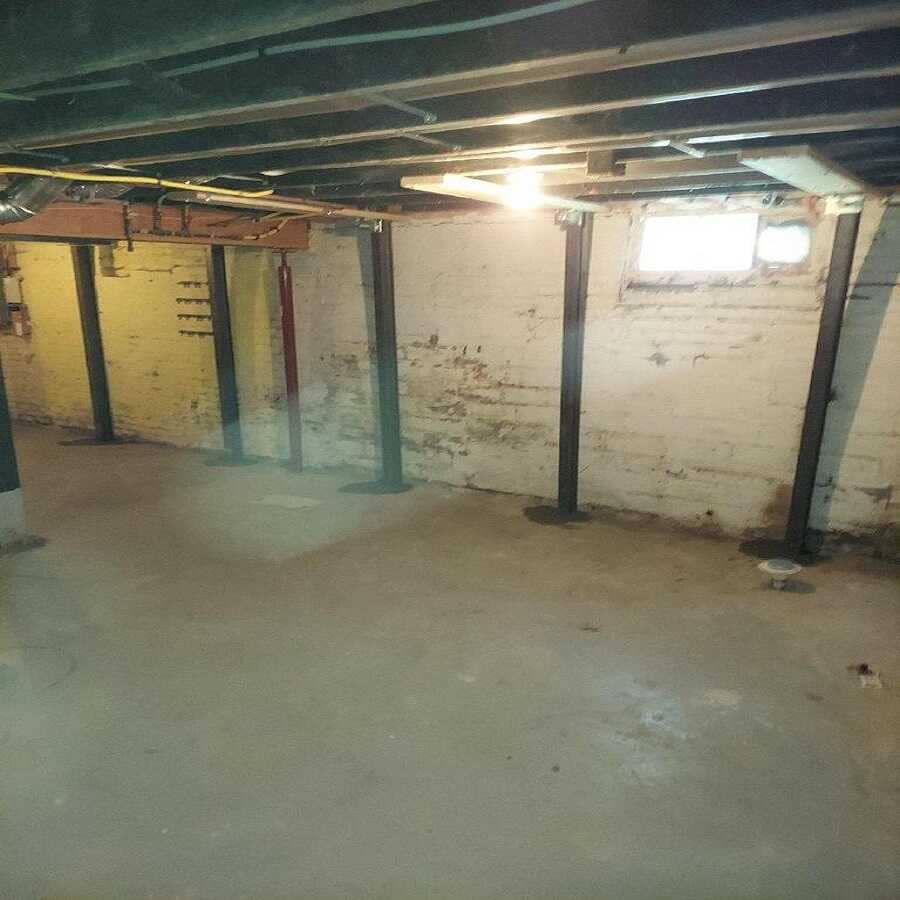8 Simple Techniques For Best Basement Waterproofing
8 Simple Techniques For Best Basement Waterproofing
Blog Article
Indicators on Best Basement Waterproofing You Should Know
Table of ContentsAll about Best Basement WaterproofingBest Basement Waterproofing Fundamentals ExplainedHow Best Basement Waterproofing can Save You Time, Stress, and Money.A Biased View of Best Basement WaterproofingAbout Best Basement Waterproofing
AdvantaClean's experienced experts and service technicians will certainly find the water resource. If wall surface or slab fractures are present, we will certainly infuse polyurethane and epoxies right into the splits and seal the compromise, stopping additional dampness from going into.Setting up basement air flow systems, conditioning systems, or basement dehumidifier systems to get water out of your basement. Selecting AdvantaClean's basement waterproofing solutions is an effective method to deal with wetness and protect against mold from jeopardizing the framework of your home and the health of your family.
If there's condensation on the outside of the aluminum foil, you have high humidity in your cellar. Fix it with a mobile room dehumidifier or a whole-house humidifier system rather than waterproofing products. If the aluminum foil has condensation on the within surface (beside the wall), the dirt around your house might be normally damp from a high water table or inadequate soil drainage.
You can waterproof simply your interior wall surfaces, which might fix the problem. Once they dry, they adhere completely to concrete and masonry wall surfaces.
Some Ideas on Best Basement Waterproofing You Need To Know
Concrete water-proof finishings can not be applied to previously painted surface areas; check the label. Known as densifiers, they are ideal just for walls that haven't been repainted or secured.
But you comb, roll, or spray it on a lot more thickly one gallon covers simply 75 square feet, not the 300 square feet regular with standard paint. Water resistant paint is fine for DIY application. You can apply it over painted surface areas, and paint over it once it's treated (one gallon costs $37).
It can cost $10,000 to $15,000, depending on the job required (Best Basement Waterproofing). Outside waterproofing involves excavating all around the residence to the complete deepness of the foundation walls, then setting up a water resistant finishing or membrane layer topped by drain panels.
7 Easy Facts About Best Basement Waterproofing Explained
We have actually all been captured in a storm with no umbrella or raincoat. And it's constantly a recipe for catastrophe: every little thing's wet, your coiffure is wrecked, and things are getting stuffy. A cellar without waterproofing is sort of like that. Minus the ruined hairstyle component. Your cellar does not wish to go with a downpour without proper defense equally as high as you don't desire to.

Outside our website waterproofing is a waterproofing you can find out more approach that involves securing your home from the outside. It's kind of like a moat around a castle. It includes digging a trench around your whole house down to the foundation (about 8 to 10 feet down). The foundation wall surfaces are then cleansed, sealed, and covered with a water-proof membrane layer or sealer.
The Definitive Guide to Best Basement Waterproofing
It's a more involved procedure that requires digging up your backyard, which is expensive and taxing. Exterior waterproofing entails removing everything surrounding your house, consisting of decks, driveways, sidewalks, landscaping, air conditioning devices, decks, and so on. If any one of the work was done improperly and water is still entering your basement, there isn't much you can do to fix or repair it.
Inside basement waterproofing includes waterproofing from the inside. Any water that leaks into your cellar is rerouted before it touches your flooring.
It's an efficient technique to water resistant your basement. The downside of indoor cellar waterproofing primarily concerns the installment procedure. This method requires kept things, furnishings, and integrated shelving or closets to be relocated from touching the cellar wall surfaces. And during setup, your basement can not be utilized. The most significant difference index in between the 2 approaches is this: Exterior waterproofing is a preventative service and interior waterproofing is a corrective solution.
What Does Best Basement Waterproofing Do?
Finally, exterior and interior basement waterproofing are both effective techniques of protecting your home from water damage. Outside waterproofing creates a barrier that prevents water from entering your home, while indoor waterproofing reroutes water that does enter your home. And it's vital to note that exterior waterproofing is a pricey and turbulent installation process when compared to indoor waterproofing.
Whichever method you pick, make sure you choose a reliable and reliable service provider for the job. If you have any kind of inquiries concerning cellar waterproofing, please get to out to us.
You can submit our form below. Best Basement Waterproofing, begin a conversation in the bottom right-hand corner, or call us at 1-800-827-0702
Report this page